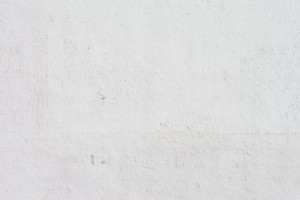 Stucco is a common substance used in construction applications, but using it can sometimes result in unexpected problems that make a finished wall or ceiling surface unsightly. The effects of mineral salts in stucco can lead to a process called efflorescence, which is an accumulation of mineral salts on the surface of concrete, masonry or stucco finishes.
Stucco is a common substance used in construction applications, but using it can sometimes result in unexpected problems that make a finished wall or ceiling surface unsightly. The effects of mineral salts in stucco can lead to a process called efflorescence, which is an accumulation of mineral salts on the surface of concrete, masonry or stucco finishes.
Efflorescence typically looks like white, powdery staining on outside surfaces. The mineral salts that become visible during efflorescence usually cause no harm to the wall, but they can detract from the aesthetic appeal of buildings where they appear.
Causes of Efflorescence
Mineral salts are often contained within the stucco itself. If stucco sand and related materials make contact with the ground, additional mineral salts can be picked up from the soil itself.
Efflorescence can occur when temperatures and moisture levels increase around a structure with stucco finishes. Rain, humidity or other sources of moisture can cause the mineral salts to leach out of the stucco and leave white stains on the wall.
Solutions
A wall stained by mineral salts can be cleaned by dry brushing the affected area, which will remove any surface deposits of salts. After the wall has been brushed, wash the area thoroughly the remove additional salts on or just below the surface. If the stains are particularly tough, call the materials supplier for information on chemical cleaners that can remove the salt deposits.
In many cases, rain will eventually wash away the salt stains.
How to Prevent the Effects of Mineral Salts in Stucco
- Use higher-grade pre-blended stucco products that don’t contain mineral salts and are sold in packaging that resists further contamination with more salts.
- Put a tarp or layer of plastic between stucco materials and the ground to prevent contamination with additional salt.
- Use an acrylic or elastomeric finish coating on the stucco surface to help prevent salt leaching.
Construction Monitor is the building industry’s reliable source for the most recent building permit data and information on trends and developments in the construction field.
Image via shutterstock.com

Hi! Thanks for sharing with us that we can stop mineral salts from affecting our stucco by adding a plastic layer on top of the ground before applying stucco. I plan to add a stucco-based grilling area in my backyard this summer. I’ll surely check out this alternative when I request an installation later.
Hey there! I’m so glad you asked about the effects of mineral salts in stucco applied to new construction. This is an important issue to consider, as it can have a huge impact on the performance and durability of the material. In short, mineral salts in stucco can help protect the material from moisture and other elements while also providing insulation and improved fire resistance. In addition, it can also help reduce cracking, improve adhesion, and extend the life of the stucco. Of course, it’s important to use the right type of mineral salt in the right amount, as too much can cause problems like efflorescence and staining.